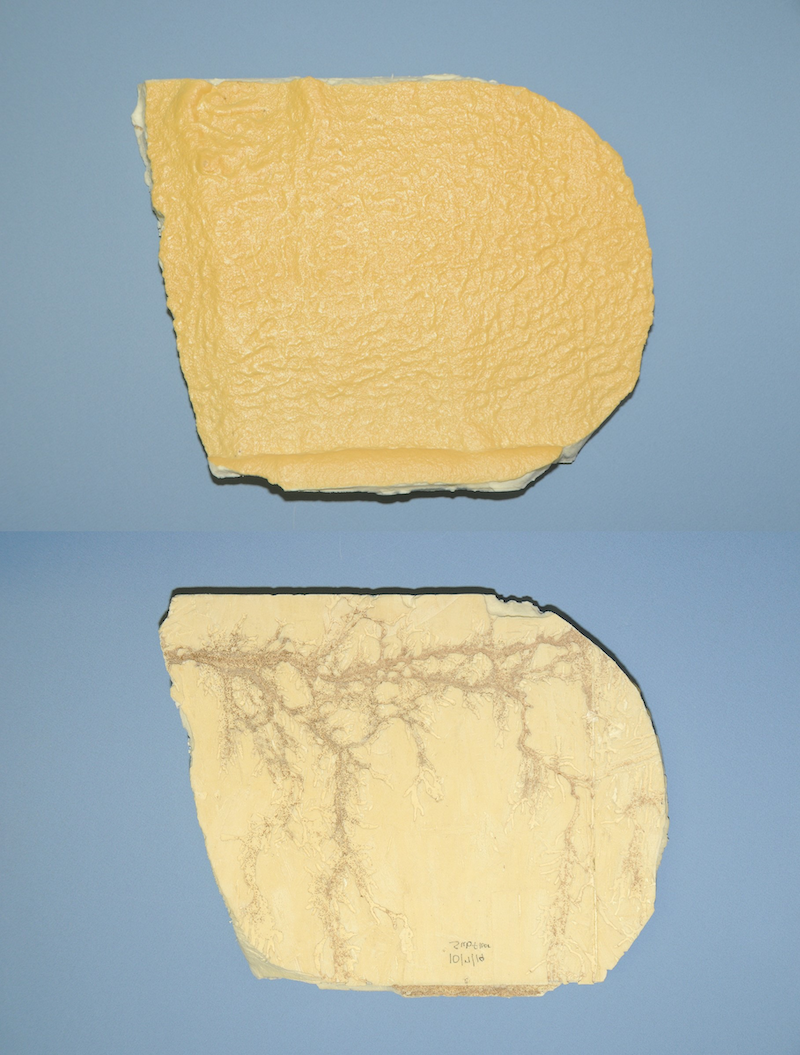Spray Foam Insulation and Termites, Vol. 8, No. 27
Related News
June 24, 2013
June 20, 2013
April 11, 2013
April 2, 2013

“We bought our house four years ago and just discovered we have termites. We had three pest control companies out to look at it, but when they discovered we have spray foam insulation in the crawl space, all three refused to take the job. What are we going to do? Termites are eating our house and we can’t get anyone to treat it.”
“We got spray foam insulation in the attic of our house last year and our pest control company cancelled our contract.”
“We found a house we would like to buy, but the termite inspection report says there are large areas of the building that cannot be inspected because of spray foam insulation. What does this mean?”
Spray foam insulation does a great job of insulating walls, roofs, and crawlspaces. It is also affordable and easy to apply, but there are important issues home buyers and builders need to be aware of.
One of the most important is that spray foam insulation makes it much more difficult to inspect for termites and detect infestations. These photos make the point. This section of closed-cell spray foam was on the underside of the subfloor in the crawl space of a building. The top photo shows what the technician could see when they were conducting the inspection. The bottom photo shows “termite tracks” on the back side of the foam, where it interfaced with the subfloor. Termites do not eat spray foam insulation, but they can tunnel through it, or behind it, making these already hard to detect pests much more difficult to detect.
Spray foam insulation can also hide leaks and other moisture problems. While leaks are serious problems by themselves, moisture is a major “conducive condition” for termites. Wood is naturally dry, and termites need a ready source of water to survive. Normally, they get water by returning to the soil and bringing mud back up into their feeding galleries. But if there is an above-ground water source, termites will readily use it, allowing them to spend more time feeding and less time hauling water. This can even allow them to establish above-ground colonies.
Above-ground colonies are especially common with Formosan termites, which are well-established in many southern counties. This is true even in buildings without spray foam insulation. The problem is magnified if leaks are hidden behind foam insulation. Adding spray foam insulation after a building has been treated for termites may cause the pest control operator to cancel their contract.
Spray foam insulation is not going away, neither are termites. The spray foam industry and the pest control industry must find ways to cooperate and coexist and such efforts are ongoing. There are treatments and methods that can be used to control termites in buildings with spray foam, and there are practices that can be adopted to reduce the potential for termite infestations going undetected due to spray foam, but these are more input and labor intensive and therefore more costly.
Bottom Line: Homeowners, home buyers, and builders need to be aware of the increased risk of undetected termite infestations associated with spray foam insulation. Do your homework and proceed with due care and caution when purchasing a building with spray foam insulation or when having spray foam insulation installed.
See the MSU Extension Termite Website and MSU Extension Publication 2568, Protect Your House from Termites for more information on termites and termite control. Also here is a brief radio program on spray foam.
Blake Layton, Extension Entomology Specialist, Mississippi State University Extension Service.
The information given here is for educational purposes only. Always read and follow current label directions. Specific commercial products are mentioned as examples only and reference to specific products or trade names is made with the understanding that no discrimination is intended to other products that may also be suitable and appropriately labeled. Mississippi State University is an equal opportunity institution.
Bug’s Eye View is now on Facebook. Join the Bug's Eye View Facebook group here.